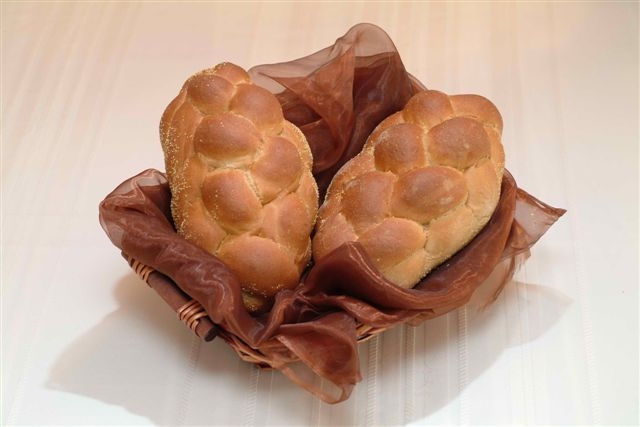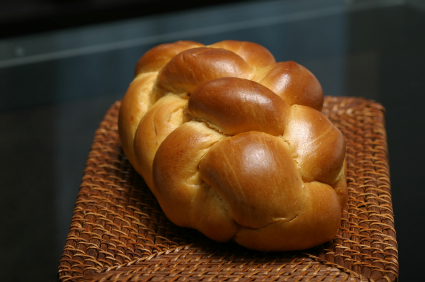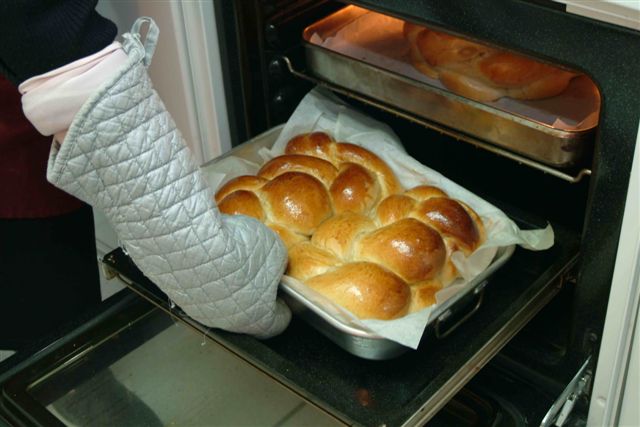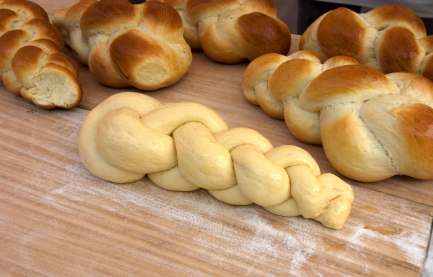Tips for challah
Texture, shaping, rising, cooling, and storing:
The key to successful challahs is not so much in the braiding as in the actual dough. Dough should be firm, yet not hard, pliable but not too wet, very slightly sticky and easy to work with.
Using a rolling pin during the shaping process greatly enhances the challahs and the way they will turn out.
Whole wheat absorbs more moisture than white flour. Spelt is a lighter, airier flour and more sensitive and the final product can dry out quickly. Bake for less time when using spelt and rise for much less time.
Cover dough during all stages with a large plastic bag so it will not dry out.
Always use yeast that is fresh, whether it is fresh or dry yeast.
Never let the dough sit outside of the fridge if it will take you more than 2-3 hours to shape it. Rather, cover it in a large bag and place it in the fridge.
Cool finished challahs on wire racks, not on the baking trays.
Freeze challahs in heavy duty freezer bags, not thin nylon.




